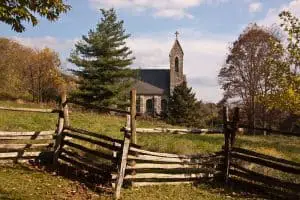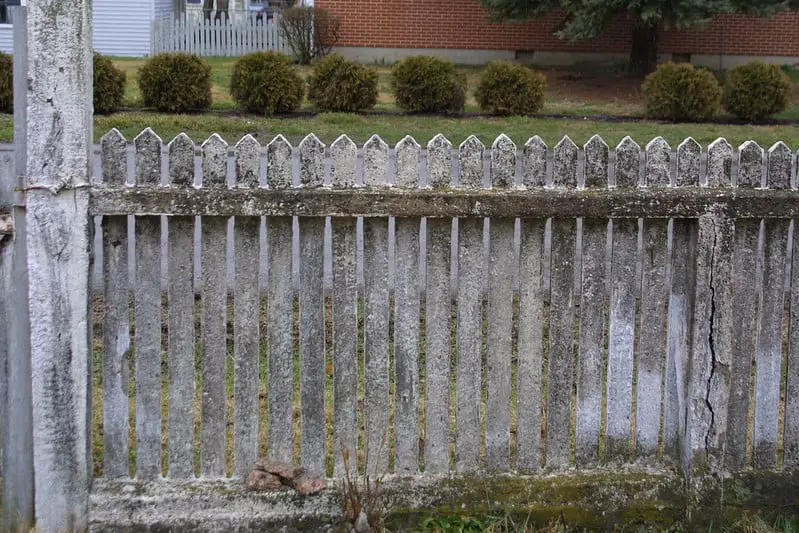So you are planning to add a fence right next to your neighbor’s fence.
Probably nothing super fancy or tall, just a midsize black metal fence.
Whatever the size or level of sophistication, you just want to integrate it with your neighbor’s fence in terms of height and maybe in color and material as well.
Price aside, you don’t know how to go about it without disrupting your neighbor’s line.
Also, tying your fence with your neighbor’s fence is not in the cards because their fence isn’t yours and isn’t even on your property, to begin with.
You are even short of ideas on how to match the two fences if you ever get the height right.
Nevertheless, you have all the reasons to put up one next to another fence:
- maybe you have had enough of the nosey or overly talkative neighbors (these will need an all-solid fence at least 5 ft. tall!)
- you have been denied access to paint or screw the ugly neighbor’s fence
- the neighbor’s fence is badly kept (falling bricks, etc.); privacy reasons
- or general privacy when working in your beautiful garden!
So, Can You Build A Fence Next To Your Neighbor’s Fence?
A big YES, but there are a few things you’ll need to put in order before embarking on the project. Firstly, you are going to need to contact your housing body or authority and understand what the local regulations and laws say about the erection of fences. You will likely require a permit as well, and possibly an extensive land survey to find out the actual position of the boundaries of your yard. Once that’s gotten done with, you might need to talk with your neighbor about the topic although this may not be very necessary in most cases.

1 – 2 feet is about right
A general rule (if your neighbor agrees to it, that is) is to build your fence 1 to 2 ft. inside the property line.
If your neighbor’s posts are on their property, building your fence very close to their fence would be an inappropriate move because it’s most likely to stand in your neighbor’s yard.
The best thing you could do in that situation would be to request them to join their fence to yours instead.
As we mentioned at the start, you may also want to obtain permission or permit from your city/HOA/municipal depending on where you live.
Chances are your neighbors have already blocked you from erecting any type of fence because of the easement right between two yards – this is just one of the things you need to look up before launching your project.
Regarding height differences, it will boil down to personal preferences.
With everything else considered, the most practical decision you could arrive at is a one-size fence (the same size as your neighbor’s). If privacy is your biggest motivation for building a fence, you might want something in the region of 6ft.
if you are building it in the front of your property and about 4 ft. in if it is at the back of your property.
However, it is recommendable that you use the same height both for the front and rear side of your property so that the entire fence looks level from anywhere.
Still, you may think of fading the height difference for the sheer fun of it or to improve the looks of the fence – it is allowed.
But that doesn’t sound like something worth your time and resources when working on the back fence.
Related: Should Neighbors Split the Cost of a Fence?
What Kind Of Fence?
A wooden, sufficiently sturdy fence would be perfect.
This kind of fence costs less compared to the brick/concrete option, plus it is semi-permanent meaning you can remove it quite easily just in case.
If you want something permanent – let’s say your neighbor’s existing fence is wooden and you don’t want inter-border interactions in the future – a permanent fence would be appropriate.
A concrete or panel wall can last between 20 and 30 years; a wooden wall will need to be replaced once every 10 years.
Wooden fence panels can be appropriate
Concrete kickers and concrete posts
Make sure your slide fence panel is installed in such a way that it can be easily slid out for staining
Wooden fences are very easy to process and your fence company will set one up in two days or less. You also don’t need to ask your neighbors if you have all the rights necessary to build it next to theirs.
Five Tips to Erect Any Fence Next to Another
If you are erecting a fence right next to your neighbor’s fence for whatever reasons, then here a few tips to help the whole endeavor go smoothly.
- Leave enough space for footings and posts
- Stagger your posts so that you don’t end up digging up your neighbor’s fence
- Concrete posts last longer and are much stronger
- Plinths or kickers work well for raised gardens and flower beds
- Concrete plinths are not vulnerable to rot like a wooden fence
Whether you plan to hire a company to do the job or you are doing the fence yourself, stay clear of the neighbor’s fence and avoid inflicting damages to it at all costs because guaranteed they’ll be hawk-eyed, watching every move you will make!
Apart from building a fence right next to theirs, ensure there is nothing else they can bring up regarding the stability of their fence, etc.
Two Things To Check Out
1. CC&Rs (Covenants, Conditions & Restrictions)
CC&Rs are rules and limits placed on a given group of homes complex by a neighborhood association, builder, homeowner’s association, or developer.
When having a home in a neighborhood that has CC&Rs in place, you will give up certain freedoms to live in that community.
For example, many building associations nowadays have smoking restrictions, noise level and parking rules, height restrictions, aesthetic guidelines regarding paint color, height restrictions, and maximum and minimum square footage requirements.
Part of these guidelines may have something to do with whether you can add a fence next to your neighbor’s fence.
Sometimes buyers or new homeowners can be given access to these documents after they have become part of the community, but most of the time, new homeowners are informed of CC&Rs and other community restrictions before settling in the community or immediately after they have signed the initial P & SA (Purchase & Sale Agreement).
It is possible the CC&Rs may prohibit fences, or restrict where you can erect them at least.
However, CC&Rs often emphasize stricter design standards if you compare them to zoning ordinances, but can be highly helpful when objecting to your neighbor’s new fence and vice versa.
Note that CC&Rs and zoning ordinances may not be crystal clear at times.
If you feel they are not clear enough to your fence plans, don’t be afraid to seek the assistance of the local planning department.
Some of them may not be in a position to provide the much-needed help with CC&Rs in which case you may hire a land-use attorney.
2. Zoning ordinances
Simply put, a zoning ordinance defines how property located in a specific geographic zone(s) can be used.
These rules detail whether certain geographic zones are suitable for commercial or residential purposes.
They may also regulate the placement, lot size, the height of homes and structures, and placement. In some situations, they may also detail the procedures used in handling any zoning rule penalties and infractions.
But you just want to erect a fence, where do they come in?
Well, zoning ordinances can actually have a say on whether there can be two fences between two properties (yours and your neighbors.
Changes to a location’s zoning ordinances can cause tension amongst prospective and current residents and even the landlords themselves.
For example, this can be the case in the event a previous code permitted two fences between two properties – if changes are made to permit one fence only, your neighbor may ask you to pull down your low-quality and probably ugly concrete or metal fence.
In a nutshell
So, can you build a fence next to your neighbor’s fence? Absolutely, but there are a few things you’ll need to put in order before embarking on the project.
Start by contacting your housing body or authority and understand what the local regulations and laws say about the erection of fences.
You will likely require a permit as well, and possibly an extensive land survey to find out the actual position of the boundaries of your yard.
Generally, a fence 1 – 2 ft. inside your own property line is permissible.
If your neighbor’s posts are on their property, building your fence very close to their fence would be an inappropriate move because it’s most likely to stand in your neighbor’s yard.
Regarding height differences, it will boil down to personal preferences.
With everything else considered, the most practical decision you could arrive at is a one-size fence (the same size as your neighbor’s)

